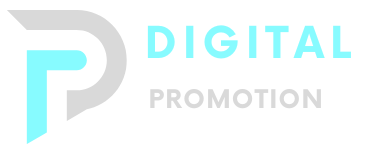Automatic reporting of return on investment (ROI) in marketing campaigns enables companies to quickly and accurately assess the effectiveness of individual activities, saving analysts’ time and eliminating the risk of manual errors. By linking analytical platforms to advertising systems and CRM, it’s possible to collect real-time data, generate precise ROI metrics and automatically distribute reports to stakeholders. Below, we present the key elements of an automated ROI reporting process—from tool integration and metric definition to campaign optimization based on the collected data.

Table of Contents
Significance of automatic campaign ROI reporting
Manually gathering data from multiple sources—Google Ads, Facebook Ads, CRM, e-commerce—is time-consuming and error-prone, especially as the number of campaigns and channels grows. Automation removes the need for manual data entry, consolidating all figures into a single view, which accelerates analysis and decision-making.
Moreover, automated reports are generated immediately after each measurement period—daily, weekly or monthly—enabling continuous monitoring of ROI and rapid response to unexpected drops or spikes. Instead of waiting weeks for agency reports, in-house marketers receive precise charts and tables, often accessible in the cloud 24/7.
Finally, automation standardizes the methodology for calculating ROI. A unified approach to accounting for all costs (ad spend, creative production, agency fees) and revenues (sales, leads, subscriptions) prevents inconsistencies between departments and ensures transparent results for executives.
Integration of analytical and marketing automation tools
To enable automatic ROI reporting, it’s crucial to integrate advertising platforms with BI systems and marketing automation tools. Standard practice uses API connectors to pull spend and conversion data directly into a central data warehouse.
On the cloud integration side, iPaaS (Integration Platform as a Service) solutions are commonly employed to configure two-way data flows between Google Analytics, CRM, social media platforms and the data warehouse. This ensures every budget change or conversion update is instantly reflected in ROI reports.
Data segmentation at the integration stage lets you assign costs and revenues to individual campaigns, ads or audience groups. Automated systems can map UTM parameters and campaign IDs, guaranteeing there are no gaps in tracking and that ROI is calculated on actual outcomes rather than estimates.
Defining and collecting key performance indicators
Before implementing automated reporting, define your KPI: customer acquisition cost (CAC), customer lifetime value (CLV), number of leads generated and revenue attributed to each campaign. These metrics form the basis of ROI calculations and must be consistently collected from all channels.
Automated scripts and API connectors gather ad cost data (daily spend), click and conversion volumes, and sales value, then link them with CRM order records. This allows you to compute the real revenue generated by a campaign, not merely forecasts or unclosed leads.
It’s also important to account for long-term value—B2B sales cycles may span months—so automatic ROI reports should support configurable attribution windows (e.g., 7-, 30- or 90-day) to measure a campaign’s full revenue impact.
Automatic generation of reports and dashboards
Integrated and processed data flow into BI platforms (Tableau, Power BI, Looker), where you define reports and dashboards that display ROI via interactive charts and tables. Every user gains real-time access to essential metrics without exporting CSVs or manually merging sheets.
Automated report scheduling—daily, weekly or monthly—ensures key stakeholders always receive up-to-date data without logging in to the system. Reports can be customized per team: marketing gets channel-level ROI breakdowns, while leadership sees an aggregated company-wide summary.
Advanced systems also support automated alerts—for example, notifying managers via email or Slack if CAC exceeds a threshold or ROI falls below a set value—enabling immediate corrective action.
Optimization of campaigns based on ROI data
With automated ROI reports, marketers can swiftly identify top-performing campaigns and reallocate budgets to them while pausing those with negative ROI. This budget reallocation process relies on hard data rather than subjective opinion.
Automation platforms can also suggest optimizations—such as CPC bid adjustments or new audience targeting—based on historical ROI analyses. Campaigns become self-learning, with marketing automation algorithms dynamically tuning parameters in real time to maintain or improve profitability.
Regular ROI reviews and ongoing optimization close the feedback loop in the marketing funnel. By knowing which activities deliver genuine returns, organizations gain a competitive advantage by directing resources where business impact is greatest.
Read this article in Polish at: Automatyzacja raportowania ROI kampanii
